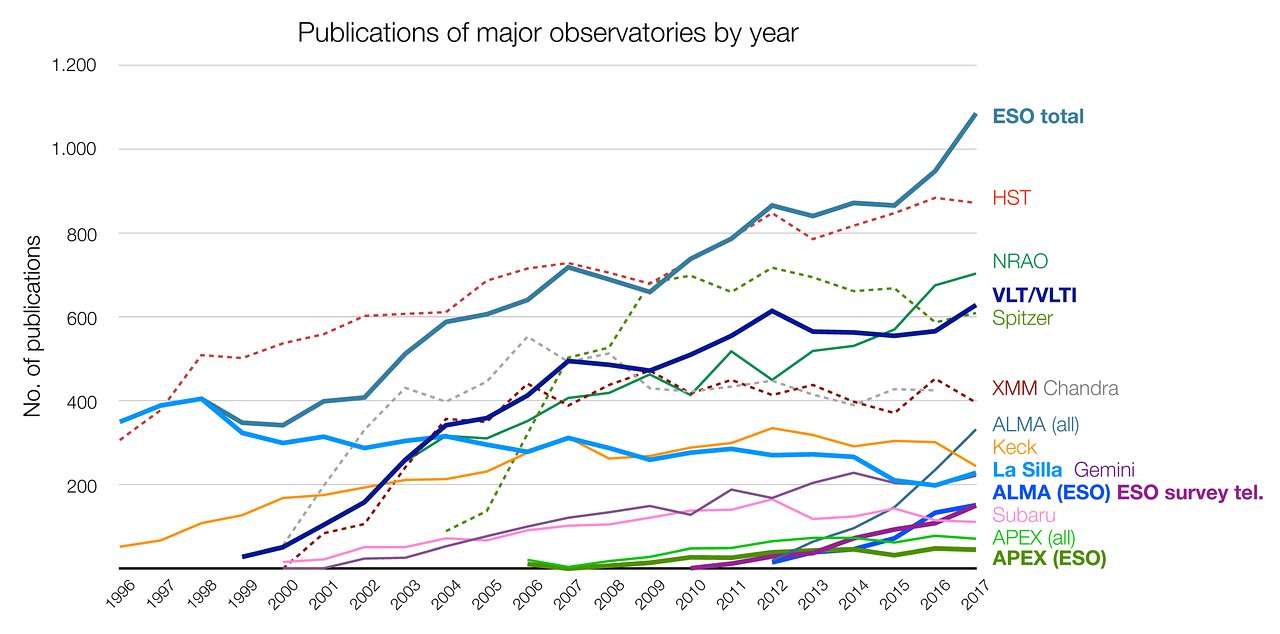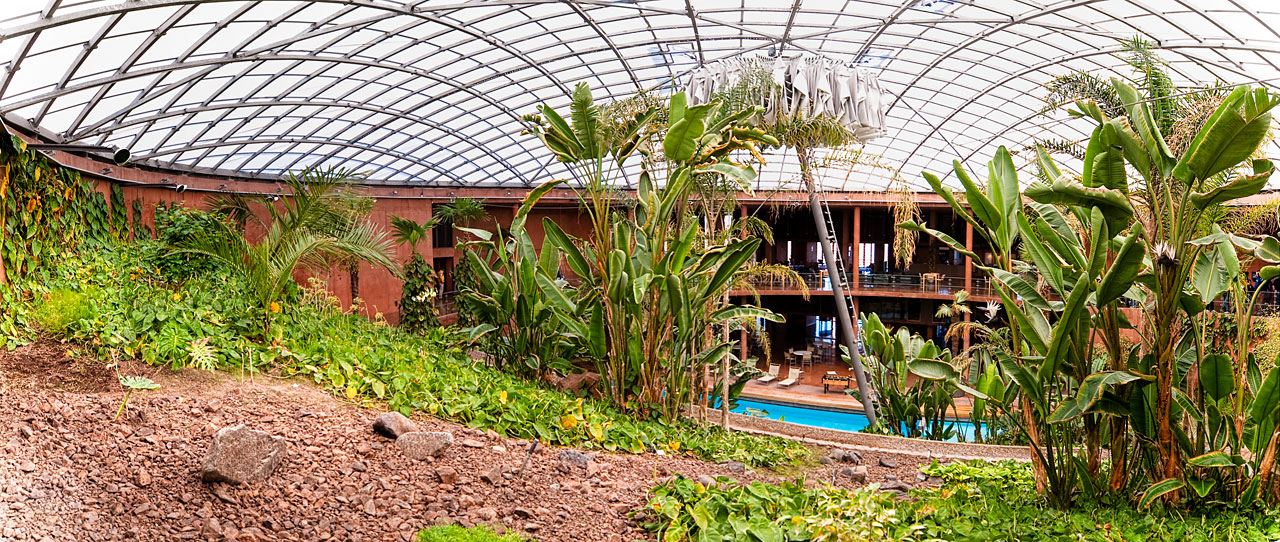- What “first light” is
- Some of ESO’s most important discoveries at Paranal
- How things have changed over the years at Paranal
- The future of ESO at Paranal
Q: What has been your personal role at Paranal?
A: I was a regular staff astronomer between 2008 and 2015, where amongst other things I was in charge of the instruments VIMOS and OmegaCAM. Since 2015 I have been the Head of Paranal Science Operations, where we have about 40 astronomers and 25 engineers in the department. My work involves making sure science operations run smoothly. I’m in charge of the optimisation of output and quality, support of new facilities and instruments, preparation and control of the department budget, as well as definition and implementation of policies at the observatory.
Q: Do you enjoy working at Paranal? What is it like to work in the Atacama Desert?
A: I enjoy working at Paranal more and more every year. The place is growing in terms of capabilities and continues to be at the absolute forefront of astronomy. We have extraordinarily dedicated staff that all share a great motivation to work here. Therefore, I do consider it a privilege to have my job. Personally, I enjoy going on walks and jogs through the desert and really immerse myself in the special atmosphere of Paranal. When I am in a particularly good mood, I may even sing a Pet Shop Boys song in the control room, much to the edification of my colleagues.
Q: Could you tell us more about the history of Paranal and how ESO came to be located there?
A: In the 1980s, after ESO's La Silla Observatory in Chile had been established for a couple of decades, it became clear that technology and astronomy as a science had evolved such that optical telescopes with apertures in the 8–10m range were becoming feasible and necessary. Furthermore, based on more detailed meteorological data of Chile, it became clear that there were sites in north Chile with even better atmospheric conditions than La Silla. The site selection for ESO's Very Large Telescope (VLT) then converged to Cerro Paranal, a mountain summit 120 km south of Antofagasta and 12 km from the Pacific Ocean at an altitude of 2635 metres. In 1988, the Chilean government donated the Paranal Summit and an area around it to ESO for the construction of the VLT. Then, in 1995, construction was halted for a while due to a legal dispute about the ownership of the summit with a Chilean family. The dispute was eventually settled, and in 1996 Paranal was formally inaugurated by the Chilean president. The “first light” took place in May 1998.
Q: Could you tell us what “first light” is and the event that took place in 1998?
A: The first light event for a telescope is when the first astronomical image is recorded with it. For Paranal, this event took place 20 years ago, on 25 May 1998 with Unit Telescope 1 (UT1). In the “life” of a telescope, this is a very important event since it demonstrates the performance capabilities of the telescope for the first time. The sharper the image we can obtain, the better. Many pieces must fall into place for this to happen, including achieving the best possible optical surfaces in the various telescope mirrors, an active adaption to optical deviations in the system, and highly accurate tracking of the telescope. The first light for the VLT on 25 May 1998 was a big success in this context: we obtained very sharp images of thousands of stars in the globular cluster Omega Centauri.
Q: How important has the VLT and Paranal been to astronomy?
A: Paranal is the most productive optical observatory in the world due to its variety of astronomical instruments and the unique atmospheric conditions. True to ESO's mission, observations with Paranal telescopes have served thousands of individual astronomers across Europe and the world. This service to the broad community, enabled by its current arsenal of instruments, makes Paranal unique.
At the same time, it’s recognised by ESO and the community at-large that large, coherent observing campaigns pursued by big, strong collaborations can provide transformational advances in our understanding of the universe. These programmes are either of use to a large part of the community, complementing the large number of smaller programmes of teams of a few people, or aim to answer one of the “big” questions in astronomy. One such example is the observing campaign of the supermassive black hole in the centre of the Milky Way that has been going on for more than 25 years with several instruments. These kinds of programmes have been increasing, and Paranal has the best suite of instruments to investigate this very special physical phenomenon.
Q: Have there been any issues for ESO whilst at Paranal?
A: Except for the eventually-settled legal dispute during the construction phase in 1995, there have not been any major issues. Quite the contrary. Relations with the Chilean government have been excellent throughout the years. This is evidenced, for example, by the additional transfer and concession of land around the Cerro Armazones summit that has allowed ESO to start the construction of the Extremely Large Telescope (ELT).
Q: What have been the major achievements and discoveries over the 20 years at Paranal?
A: The continuous observation of the surroundings of the Milky Way's centre is one of Paranal's key achievements. Measuring the motion of stars in this region has provided the ultimate proof for the existence of black holes. Paranal has also obtained the first ever image of an exoplanet and the first ever characterisation of the atmosphere of a Super-Earth exoplanet. The VLT helped to prove that the violent cosmic events called Gamma Ray Bursts are linked to supernovae. It measured the light emanating from the gravitational wave event in 2017 and was instrumental in confirming the nature of a nearby solar system with seven Earth-like planets.
Q: What changes have occurred over the years?
A: Unsurprisingly, there have been many changes over the years. Information technology and, in particular, worldwide connectivity have improved dramatically. At the beginning of operations at Paranal, the observatory really was a lonely island in the middle of the desert, both geographically and in terms of communication. Nowadays, we have high-speed internet connectivity that includes a real-time transfer of data taken at Paranal to the data archive at ESO Headquarters in Garching, Germany. In the early days, data was shipped to Europe on hard disks and took weeks to arrive. Now you can download them to your laptop within minutes. This has enabled a very close feedback loop to our colleagues in Garching and to users all over the world and immensely streamlined the science operations data flow.
Until a few years ago, most of our daily working routine was based on paper checklists. Now we have integrated online activity tracking tools across ESO. Until recently, internet connectivity in the accommodation for scientists and engineers, the Residencia, was restricted to some ethernet cables. Now we have high-speed wireless that even allows, say, Netflix streaming in one of the most remote places in the world. Also, for many years turbines and generators on site supplied power to the observatory. Since 2017, Paranal has been connected to the Chilean power grid.
On the side of the instruments in use: the early instruments were certainly less complex compared to the standards of today. Nevertheless, several of these older instruments continue to be at the very top of the scientific publication ranking and requests for telescope time due to the unique observing areas each cover. With newer instruments, several are very complex in order to fulfil the specific needs of a certain community, such as imaging planets and stellar disks. But the ones that receive the highest time requests are typically the ones with a general purpose and a “simple” observing mode (though a “simple” mode does not mean it is a simple device — sometimes quite the opposite). Examples of these are MUSE and X-Shooter for the second generation of instruments, and FORS2 for the first generation.
In recent years, the big change for Paranal for sure is the beginning of work for the ELT. Paranal sometimes doesn’t feel like a small family anymore. It has certain characteristics of industrial places, with very strict maintenance protocols and a large number of staff and contractors. With the arrival of the ELT and its interface with the Paranal infrastructure, those aspects will gain further importance. I am sure we will maintain Paranal as a great place to work and live even—or in particular—with the inclusion of the ELT, which will require a lot of preparation for the changes to come.
Q: What does the future hold for ESO at Paranal, in regard to the ELT?
A: The future is extremely bright with the ongoing construction of the ELT, which will see first light in about six and a half years. The ELT will be fully integrated into the Paranal Observatory. Amongst other things, we all secretly hope to detect a second Earth around another star with the ELT, and generally contribute to a much better understanding of our Universe. It is exciting to see the constructions at Cerro Armazones proceeding, and the first technical infrastructure be erected at Paranal premises. It will be very hard work for many of us, and, in particular, the project team, to achieve our dream of observing the universe with the ELT. In terms of long-term motivation for a job at Paranal, I would say there has never been a better time.
Numbers in this article
| 12 |
Kilometres from the Pacific Ocean |
| 25 | About the number of engineers in Science Operations at Paranal |
| 40 | About the number of astronomers in Science Operations at Paranal |
| 1998 | The year of first light at Paranal |
| 2635 | Altitude of Paranal in metres |
Biography Steffen Mieske
Steffen Mieske is the Head of Science Operations at Paranal. He obtained his PhD in astronomy in 2005 from Bonn University. Between 2000 and 2004 he pursued research for his Masters and PhD at the Pontificia Universidad Católica de Chile. In 2005 he joined ESO as a fellow in Germany and moved to Chile in August 2008 as an ESO Staff Astronomer. Steffen was the instrument scientist of OmegaCAM and VIMOS, then Deputy Head of Science Operations between 2014 and 2015 before moving into his current position in July 2015. His scientific interests comprise the high-mass end of the globular cluster population and ultra-compact dwarf galaxies (UCDs), and generally the internal dynamics of compact stellar systems. Recently, he has focused in particular on the search for supermassive black holes in UCDs.









